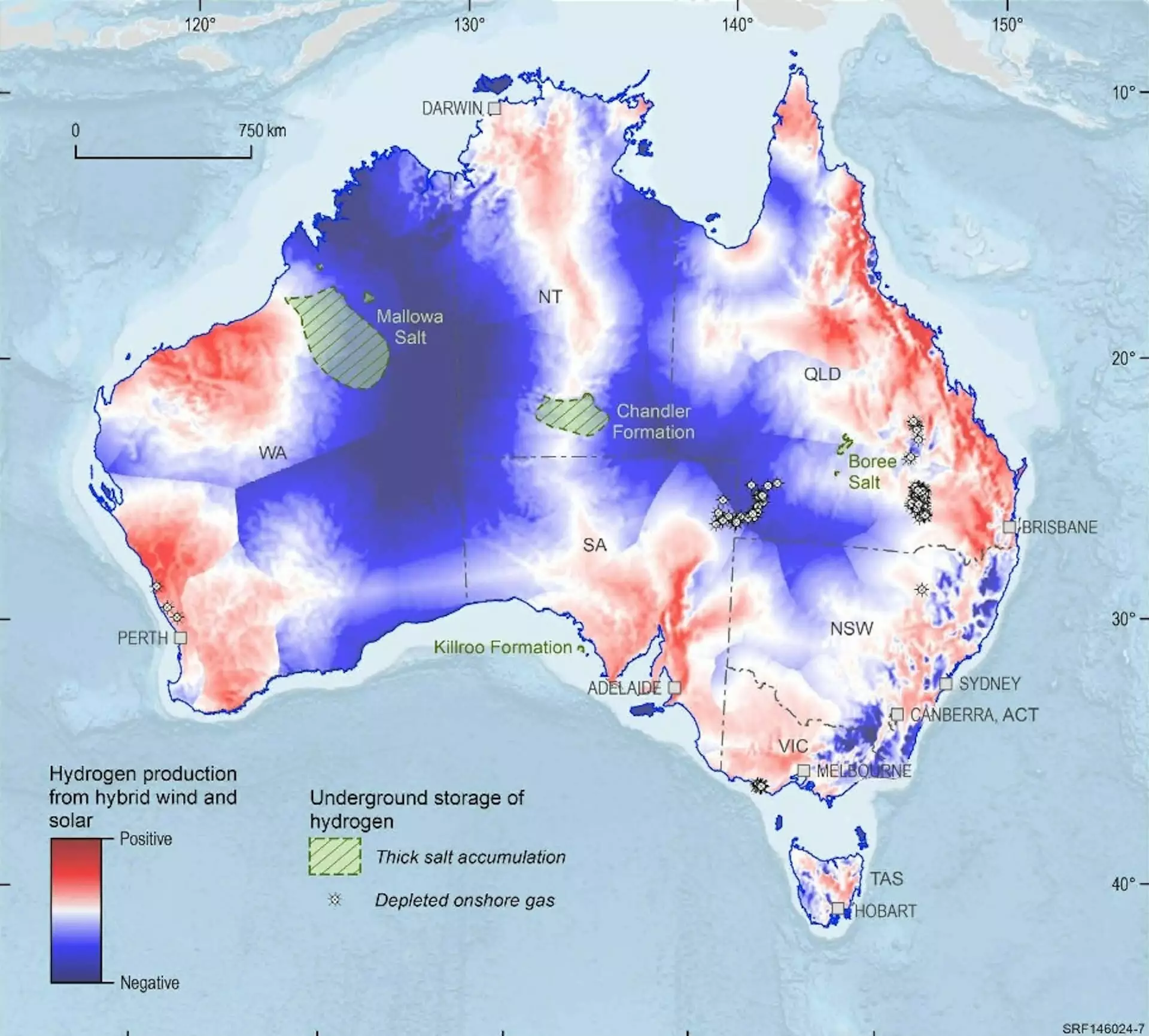In light of global climate challenges, Australia’s journey towards achieving a net-zero emissions future hinges significantly on the development of a robust hydrogen industry. The recently unveiled National Hydrogen Strategy, spearheaded by Federal Climate Change and Energy Minister Chris Bowen, outlines a roadmap meant to position Australia as a leader in low-emissions technology. This initiative updates the previous strategy developed in 2019 and aims to streamline the production of green hydrogen, ensuring it is not only efficient but also economically competitive.
Australia has unique advantages due to its abundant renewable energy resources, yet the new strategy faces the daunting task of overcoming numerous obstacles associated with scaling hydrogen production. The underlying ambition of the strategy is not just to produce hydrogen but to do so in a way that supports Australia’s economic prosperity in a global context where the demand for cleaner energy sources is rapidly increasing.
The new National Hydrogen Strategy not only builds upon the foundations of its predecessor but also reflects a thoughtful response to the evolving dynamics of the hydrogen market. As the strategy develops, it appears to confront previous shortcomings, particularly regarding the feasibility of hydrogen production. The document sets ambitious targets of producing 500,000 metric tons of green hydrogen annually by 2030, with an ultimate goal of 15 million tons by 2050. This is an ambitious proposition that necessitates realistic expectations for technological advancement and infrastructure development.
One crucial point of concern is whether taxpayer funding will inadvertently support projects that lack viability. There’s a temptation to see hydrogen as a panacea for fossil fuel dependency, but the strategy must carefully navigate the potential pitfalls of failing investments. Diversifying hydrogen applications beyond merely exporting it as a liquid fuel requires an exploration of localized uses, particularly in high-emission industries such as steel and chemicals.
As the landscape of hydrogen production continues to evolve, Australia’s strategy must take international market dynamics into account. The focus appears to have shifted from exporting to Japan and South Korea to accommodating emerging markets in Europe, particularly Germany. Minister Bowen’s announcement of a significant deal to guarantee buyers in Europe underscores a clear pivot in export strategies. Nevertheless, the effective transportation of hydrogen remains a pressing concern given its inherent volatility and the complexities of storage and distribution.
The strategy must reflect a balance between fostering export opportunities and ensuring domestic energy security. As hydrogen technology matures, it’s imperative for Australia to focus on innovative means of utilizing hydrogen at home, thereby reducing emissions from sectors that rely heavily on fossil fuels. Sustaining a domestic market alongside pursuing international sales may prove more beneficial in the long run.
The effectiveness of the National Hydrogen Strategy will largely depend on its practical implementation. Several questions linger regarding government roles in funding and infrastructure development that still need addressing. For instance, will priority industries including aviation, electricity storage, and freight trucks receive support before others? Equally important is how the government will regulate projects deemed unfeasible or devoid of economic promise.
Moreover, public acceptance and community engagement are paramount. The legacy of safety concerns surrounding hydrogen technologies must not be overlooked. Building stakeholder confidence, particularly among First Nations communities and local populations, requires transparent communication about both the benefits and potential risks of hydrogen production. This strategy recognizes community impacts and strives for greater inclusivity, but it must actively engage communities to cultivate broader support.
As Australia embarks on this ambitious hydrogen journey, the need for continuous assessment and adjustment of the strategy is evident. The government plans to review the strategy in 2029, providing an opportunity to evaluate successes and recalibrate goals based on the realities of the hydrogen market. Key indicators for success will include significant investments in large-scale hydrogen projects, the establishment of production facilities, and, importantly, the formation of long-term contracts with hydrogen users.
While the road ahead is filled with both challenges and opportunities, the potential benefits of a thriving hydrogen industry could lead to transformative changes in Australia’s economy and energy landscape. Success in this venture will not only contribute to reducing emissions but also boost innovation within the renewable energy sector and create new jobs across diverse communities. Should these critical developments falter in the coming years, it will be imperative for Australia to reassess its hydrogen ambitions and seek alternative avenues for achieving its climate goals.

